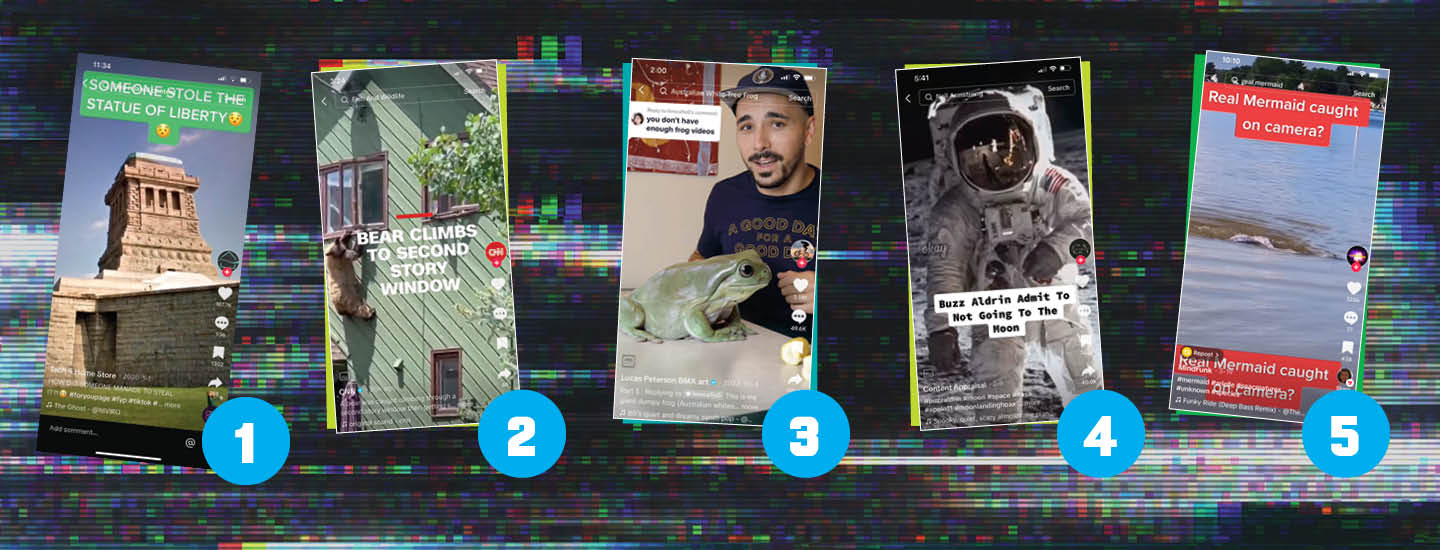A giant frog sits on a table. Suddenly, it pounces. The frog pulls half a banana into its huge mouth. In the blink of an eye, everything but the peel is gone.
That hungry frog is named Dumpy. In the fall of 2022, Dumpy got millions of views on TikTok. People were wowed by his size. Australian tree frogs are usually only 4 to 5 inches long. Dumpy looked as big as a football!
The frog went viral. But here’s the thing: The video wasn’t real. The frog’s owner had edited it to make his pet look like a giant. He knew it would get him views.
The manipulated video of Dumpy was harmless fun. But it’s an example of a growing problem. Fake videos are on the rise—and they are becoming very hard to spot.
A giant frog sits on a table. Suddenly, it pounces. It grabs half a banana in its mouth. In a flash, everything but the peel is gone.
That frog is named Dumpy. In 2022, Dumpy got millions of views on TikTok. People were wowed by his size. Australian tree frogs are usually 4 to 5 inches long. Dumpy looked as big as a football!
The frog went viral. But the video wasn’t real. The frog’s owner had edited it. He made his pet look like a giant. He knew it would get him views.
The manipulated video of Dumpy was just for fun. But fake videos are a growing problem. And they are becoming very hard to spot.
A giant frog is sitting on a table, when suddenly, it pounces. It pulls half a banana into its huge mouth, and in the blink of an eye, everything but the peel is gone.
That hungry frog, named Dumpy, got millions of views on TikTok in the fall of 2022. People were wowed by his size because, while Australian tree frogs are usually only 4 to 5 inches long, Dumpy appeared to be as big as a football!
The frog went viral. But here’s the thing: The video wasn’t real. The frog’s owner had edited it to make his pet look like a giant because he knew it would get him views.
Though the manipulated video of Dumpy was harmless fun, it’s an example of a growing problem. Fake videos are on the rise—and they’re becoming much more difficult to spot.

